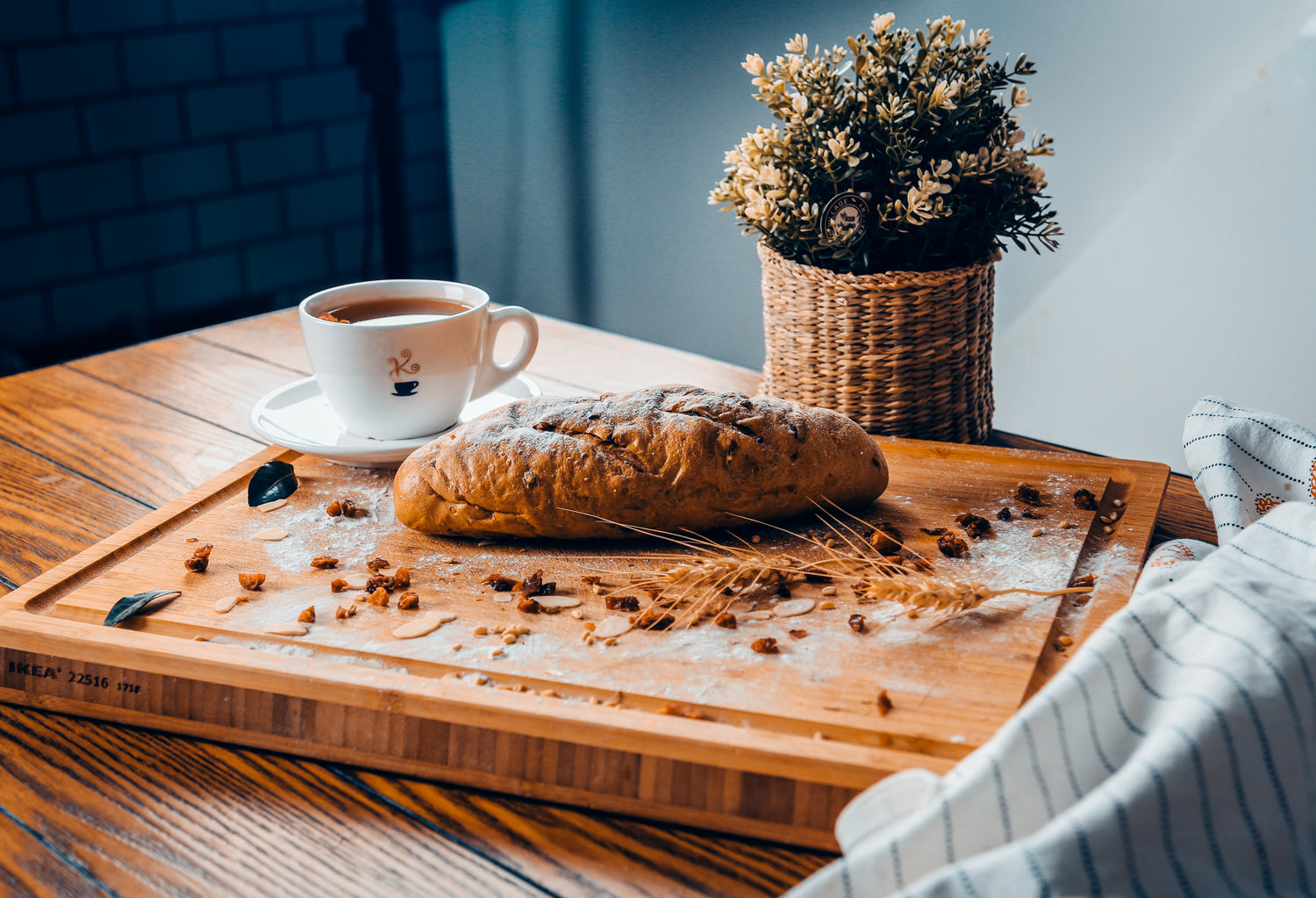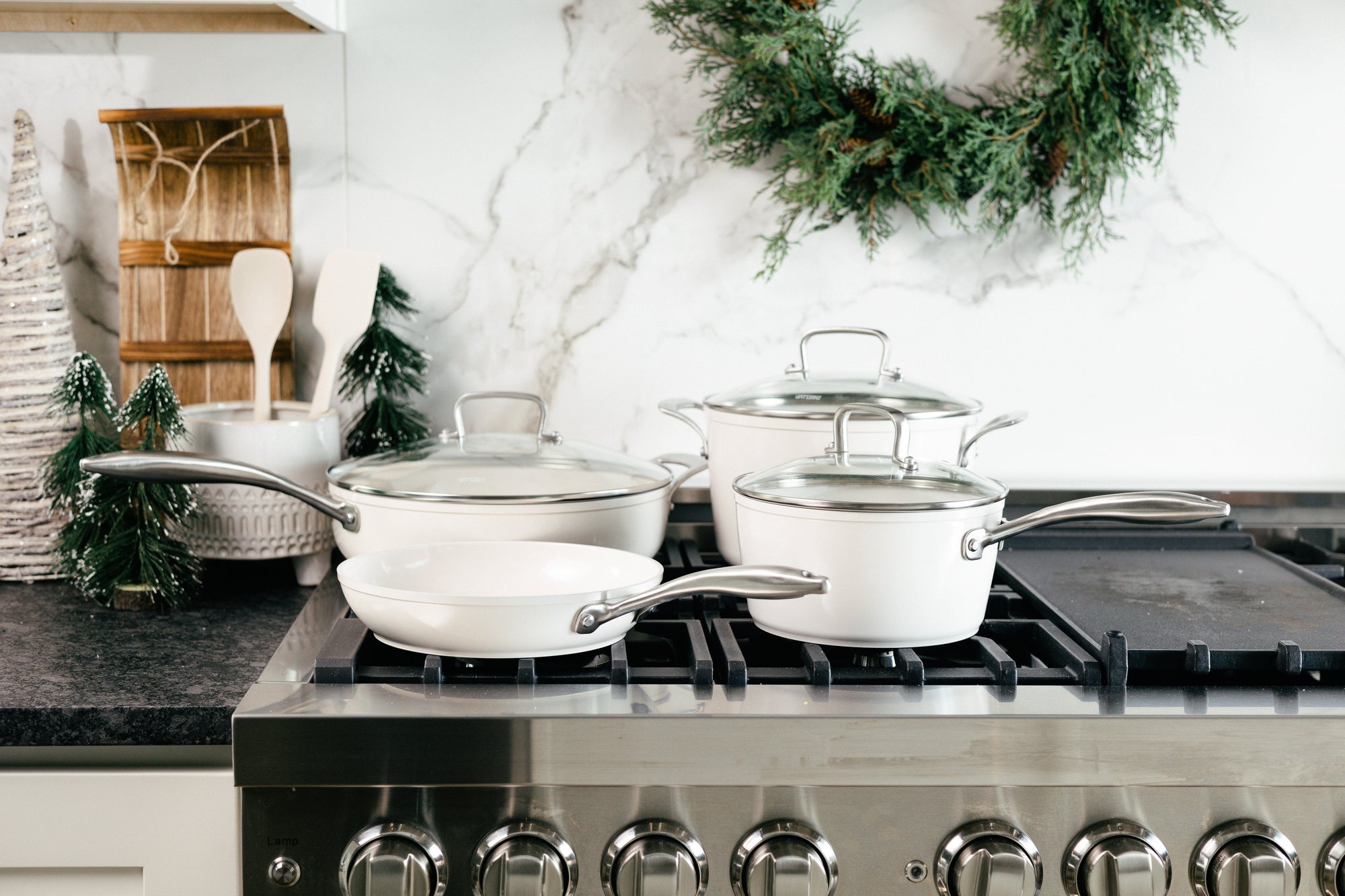Cutting boards have been used for thousands of years, and for as long as humans have been cutting their food, wood has been the material of choice. Not only is wood an abundant material and very easy to use, but it is also soft enough to ensure that knives and cutting tools are not damaged.
Nowadays, wooden cutting boards are a staple item in every kind of kitchen and are still considered the superior choice of material. However, there are many different types of wooden cutting boards to choose from, with each option often designed for certain types of cooking. That means ensuring you select the right style for your needs, will keep your knives in the best condition possible as well as helping to ensure your kitchen remains clean and hygienic.
Choosing the right cutting board
When it comes to finding the right cutting board for your kitchen, there are a number of factors that you should consider. Some of the most important considerations you need to remember include:
Hardwood or Softwood

Primarily, the material is far more durable and is more resistant to scratches, ensuring that it will remain looking its best for a lot longer. Equally, they are less likely to make your knives become dull, ensuring they will require less sharpening and will be able to last you a lot longer. Many chefs find that a hardwood cutting board also helps to make their preparation easier as it provides less give than softwoods, ensuring a cleaner cut.
Porosity
The second major consideration that you should factor in is the porosity of your board. This will depend on the type of the ingredients that you are going to primarily be cutting, and typically wood has three levels of porosity:
- Ring
- Semi-diffuse
- Diffuse
Ring-porous wood features larger pores, which means that moisture is more likely to seep into the chopping board. This is a haven for bacteria, particularly if you are regularly cutting raw meat on the board, and can lead to food contamination.
The less porous a wood is the better resistance that you will have against absorption. That is why many of the premium boards are typically made from a diffuse hardwood.
Dimensions

Another important factor to consider when trying to find the perfect chopping board for your kitchen is the overall size. Typically, the bigger, the better as a small board can limit your cutting ability and result in you having to try and work around using a knife that is too big for the cutting area, which can be very dangerous.
Professional chefs recommend that you keep at least one inch on either side of the knife when it is laid diagonally across the board. You should also consider the overall depth of the board. The thicker it is, the less likely it is to split or crack, while a thicker board also tends to repel water better, ensuring it is able to keep its strength.
Larger boards are also heavier, which can help them to be more study on your countertop and ensure that you do not face it accidentally slipping while trying to cut your ingredients.
Toxicity
Although this is not a consideration if purchasing your wooden chopping board from a reputable seller, if you are looking to create your own, then you should consider the toxicity of the material. Not all wood is safe for use around food and can end up causing you to experience irritation, rashes, swelling, and even poisoning.
Exotic woods might sound appealing, but they are best to avoid and instead stick to wood from trees that provide edible fruits such as cherry, walnut, and maple. Alongside the material itself, you also need to consider the products used to finish the board. Any glue, varnish, conditioner, or finishing agent that you choose will need to be non-toxic and safe for use around food.
Features
 When people think of a chopping board, you most probably picture a rectangular-shaped piece of wood. However, while that might be a perfectly suitable option for basic cooking, if you are looking to take your culinary skills to the next level, then you should also consider the various additional features that your board offers.
When people think of a chopping board, you most probably picture a rectangular-shaped piece of wood. However, while that might be a perfectly suitable option for basic cooking, if you are looking to take your culinary skills to the next level, then you should also consider the various additional features that your board offers.
One of the most beneficial additions is a carrying handle, as this allows you to easily transport it around the kitchen as needed. Another popular feature is a wooden chopping board with a textured underside to maximize its traction while on the countertop. This will help to ensure it remains fixed in place as you cut your ingredients, reducing the risk of it slipping and causing an accident.
If you are going to be cooking with a lot of raw meat or juicy fruit, then having trenches around the edge will help to capture any stray blood or juices that might run off and prevent them from dripping onto your worktop.
Best types of wood
When you have chosen the style and design of the board that you want, you should also then consider the exact type of wood you want it to be made from. There is a vast array to choose from, but some of the most common on the market include:
- Maple
 Maple is arguably the most popular type of wooden cutting board on the market today. A very common hardwood, maple is not only incredibly durable, but it is renowned for its resistance to bacteria and mold, making it perfect for any kitchen. Its natural color also makes it an attractive feature in any room.
Maple is arguably the most popular type of wooden cutting board on the market today. A very common hardwood, maple is not only incredibly durable, but it is renowned for its resistance to bacteria and mold, making it perfect for any kitchen. Its natural color also makes it an attractive feature in any room.
If you are making your own wooden chopping board, remember to use Sugar Maple and not the toxic Red Maple.
- Ash
Another very popular choice for wooden cutting boards’, ash is an equally as durable wood, which makes it perfect for withstanding the everyday use that it experiences. As it is a light wood, it might occasionally need some care to ensure it remains in the best working condition.
- Cherry
This dark-colored wood is a fantastic choice for cutting boards as it is not only easy to care for, but it will not damage or dull your expensive knives. With the right treatment, cherry wood cutting boards are able to last for a number of years without any issues.
- Walnut
 This is another popular hardwood for kitchens around the world. The dark color is incredibly appealing, and although it is slightly softer than most wooden chopping boards on the market, it is still highly durable and capable of lasting many years.
This is another popular hardwood for kitchens around the world. The dark color is incredibly appealing, and although it is slightly softer than most wooden chopping boards on the market, it is still highly durable and capable of lasting many years.
- Teak
Teak is often used for an abundance of wooden materials, and it makes for a perfect choice for a wooden chopping board too. It is naturally a water-repelling wood, while it features a tight grain, which makes it one of the most hygienic and easy to maintain woods on the market.
- Beech
Beech is one of the best all-rounders when it comes to wooden chopping boards. It is a naturally diffuse-porous wood, as well as offering users strong resistance against damage and wear, ensuring it is capable of lasting for a very long time.
- Bamboo
Bamboo is not technically a wood; however, it features many of the same properties and is a more sustainable solution, which makes it increasingly more popular. It is a very hard substance and does not absorb water.
- Acacia
Acacia is not a very common solution for wooden chopping boards, but it is growing in popularity thanks to its affordability and durability. It is also available in a range of colors, making it suitable for a wide range of kitchen themes.
Of course, while these are some of the best woods to use for a chopping board, there are also those options that you should avoid. Although it is known as a hardwood, Oak, for example, is one that you should avoid due to it being very porous.
Equally, although softwoods can make for fairly effective wooden cutting boards, they are more prone to becoming damaged or breaking. This will lead to a higher risk of damaging your kitchen knives as well as requiring you to have to replace the chopping board more regularly.
Final thoughts
When it comes to finding the best chopping board for your home, there is so much more to consider than having it simply provide you with a flat surface to cut your meat and vegetables on. If you are looking for the best wood for your cutting board, then there are many different factors that you will need to consider.


